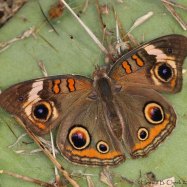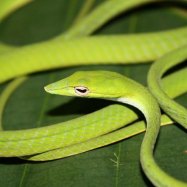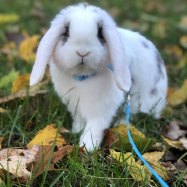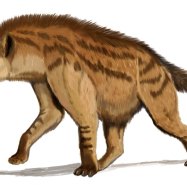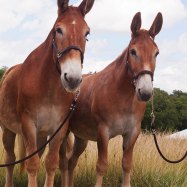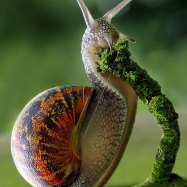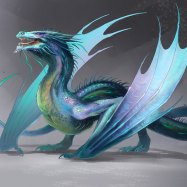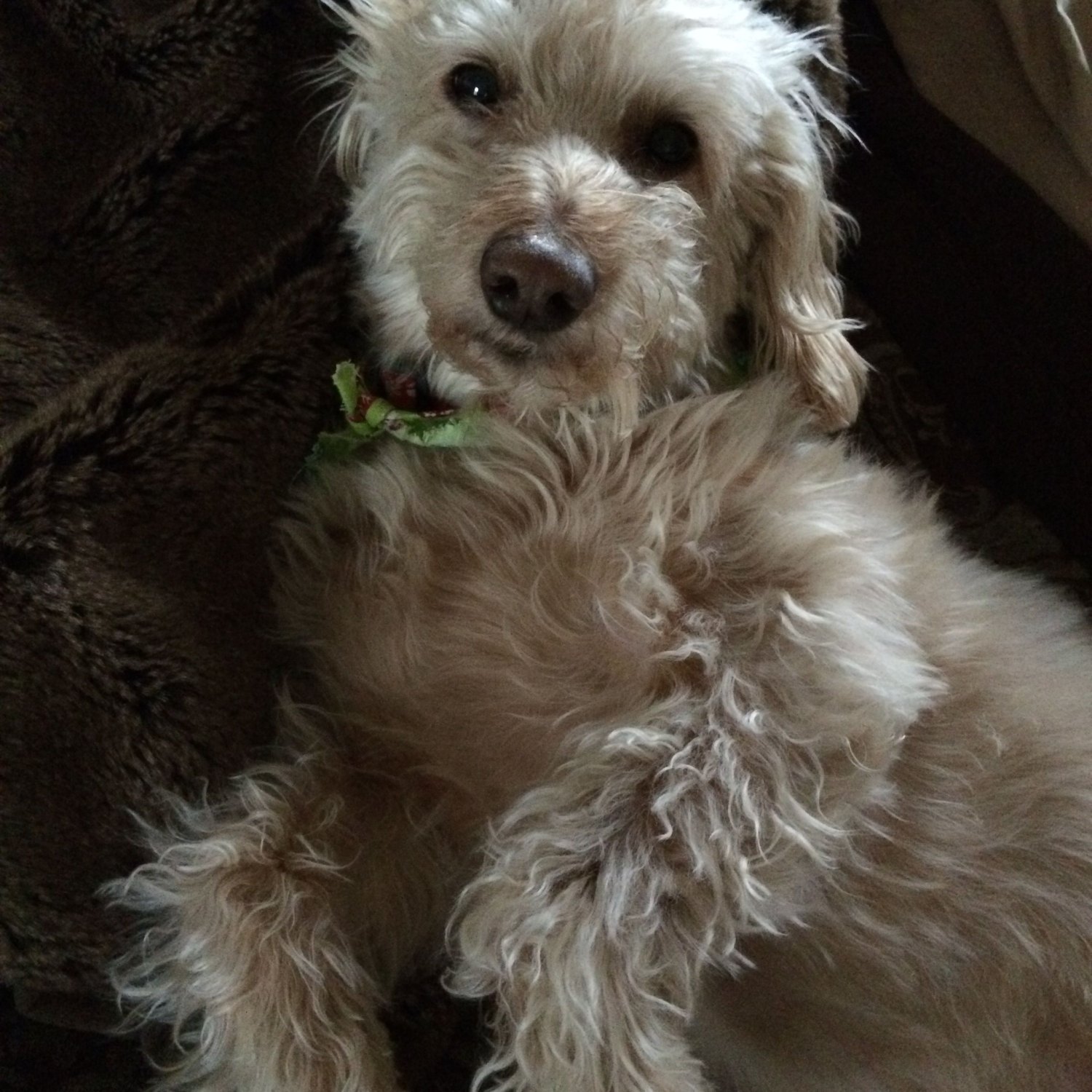
Doxiepoo
Varies
Looking for a new furry friend? Consider a Doxiepoo! This adorable hybrid combines the playful personality of a dachshund with the intelligence of a poodle. They come in various sizes and can be found all around the world. With their loving nature and compact size, Doxiepoos make for great family pets. Plus, their cute little bodies are perfect for cuddling! #Doxiepoo #DogLovers #FurryFriends
Animal Details Summary:
Common Name: Doxiepoo
Kingdom: Animalia
Habitat: Varies
The Doxiepoo: A Small But Mighty Mixed Breed
Have you ever heard of a Doxiepoo? If not, be prepared to fall in love with this adorable and intelligent mixed breed. With its unique features and lovable personality, the Doxiepoo is a popular choice among dog lovers. In this article, we'll explore everything you need to know about this furry friend, from its scientific name to its living habits and characteristics.What is a Doxiepoo?
The Doxiepoo, also known as Doxipoo, Doxiedoodle, and Dachshunddoodle, is a designer dog breed created by crossing a Dachshund with a Poodle Doxiepoo. As the name suggests, it is a mix between two popular breeds, resulting in an adorable and playful companion. While it is not a recognized breed by the American Kennel Club (AKC), it is gaining popularity and recognition among dog enthusiasts.The Scientific Name and Classification of Doxiepoo
The scientific name of the Doxiepoo is Canis lupus familiaris, which is the same as all domestic dogs. However, because it is a mixed breed, it does not have an official scientific name. The Doxiepoo falls under the Kingdom Animalia, Phylum Chordata, Class Mammalia, and Order Carnivora. Within the Order Carnivora, it belongs to the Family Canidae, which also includes wolves, foxes, and coyotes.Appearance and Size
Doxiepoos can have varying appearances, depending on which parent they take after more. They can have a short or curly coat, which comes in a variety of colors, such as black, brown, cream, and white. Their body shape also varies, but they are typically small to medium-sized dogs Dragon Eel. They can weigh anywhere between 10-30 pounds and stand at 8-15 inches tall.Where Do Doxiepoos Come From?
The Doxiepoo is a relatively new breed, and its specific origin is not known. However, it is believed to have originated in the United States, just like most designer dog breeds. This lovable mix is a result of crossing a Dachshund, originally from Germany, with a Poodle, a breed originating in Germany and France.Living Habitat and Distribution
Being a domesticated breed, Doxiepoos do not have a particular living habitat. They can adapt well to various living spaces, from apartments to large homes, making them ideal for city or rural dwellers. As for their distribution, Doxiepoos can be found worldwide, wherever there is a demand for them. They are a popular choice among dog lovers, and you can easily find breeders or rescue shelters to adopt one.Eating Habits of Doxiepoos
One of the best things about Doxiepoos is their adaptable nature, and this is also true for their diet. They can be fed on both wet and dry dog food, which should be of high quality and suitable for their size and activity level. Being an omnivore, Doxiepoos can also enjoy a diet consisting of meat, vegetables, and fruits. It is essential to consult your veterinarian for the best feeding methods for your furry friend.Characteristics and Temperament
Doxiepoos are known for their friendly and loving nature, making them great family pets. They have a playful side to them, inherited from both their Poodle and Dachshund parents. However, they can also have a stubborn streak, making them a bit challenging to train. But with early socialization and training, they can make obedient and loyal companions.Geographical Distribution of Doxiepoos
As mentioned earlier, Doxiepoos can be found worldwide, wherever there is a demand for them. The popularity of this mixed breed is increasing, and you can find them from the United States to Europe and even Australia. However, it is important to get a Doxiepoo from a reputable breeder to ensure they are healthy and well-cared for.The Doxiepoo's Adaptability
Doxiepoos are an adaptable breed, thanks to both their Dachshund and Poodle heritage. They can live in various climates and are comfortable in different living spaces. They are also great with children and other pets, making them a perfect addition to any family. However, their adaptability also means they can suffer from separation anxiety if left alone for extended periods.The Lifespan of Doxiepoos
One of the perks of owning a Doxiepoo is their long lifespan. This breed can live up to 15 years, which is a relatively long time for a dog. However, as with any canine, it is vital to take care of their health and well-being to ensure they live a long and happy life.Grooming Needs
Doxiepoos have a low shedding coat, making them a great choice for those with allergies. Their coat requires regular brushing to prevent matting and to keep it looking healthy. They will also need to have their nails trimmed regularly and their ears cleaned to avoid infections. Additionally, it is recommended to have their teeth brushed frequently to maintain good oral hygiene.The Cost of Owning a Doxiepoo
The cost of a Doxiepoo can vary depending on the breeder, location, and availability. On average, this breed can cost anywhere between $500-$1500. It is important to do thorough research before purchasing a Doxiepoo to ensure you are getting a healthy and well-bred puppy. You can also adopt a Doxiepoo from a rescue shelter, which can cost significantly less.Final Thoughts
The Doxiepoo is a perfect example of what happens when two popular breeds come together. This lovable mixed breed is gaining popularity worldwide, thanks to its friendly nature and versatile traits. It is important to remember that every dog is unique, and not all Doxiepoos will have the same characteristics. But one thing is for sure, the Doxiepoo will make a loyal and loving companion for many years to come.

Doxiepoo
Animal Details Doxiepoo - Scientific Name: Canis lupus familiaris
- Category: Animals D
- Scientific Name: Canis lupus familiaris
- Common Name: Doxiepoo
- Kingdom: Animalia
- Phylum: Chordata
- Class: Mammalia
- Order: Carnivora
- Family: Canidae
- Habitat: Varies
- Feeding Method: Omnivorous
- Geographical Distribution: Worldwide
- Country of Origin: N/A
- Location: N/A
- Animal Coloration: Varies
- Body Shape: Small to medium-sized
- Length: Varies

Doxiepoo
- Adult Size: 10-30 pounds
- Average Lifespan: 10-15 years
- Reproduction: Sexual
- Reproductive Behavior: Varies
- Sound or Call: Varies
- Migration Pattern: Non-migratory
- Social Groups: Varies
- Behavior: Varies
- Threats: Varies
- Conservation Status: Not evaluated
- Impact on Ecosystem: N/A
- Human Use: Companion
- Distinctive Features: Varies
- Interesting Facts: A Doxiepoo is a crossbreed between a Dachshund and a Poodle.
- Predator: Varies

Canis lupus familiaris
The Unique and Charming Doxiepoo: A Crossbreed of Dachshund and Poodle
Dogs have always been known as man's best friend, providing love, companionship, and protection to their human owners. With their different breeds and distinct characteristics, dogs never cease to amaze us. One of the most fascinating dog breeds is the Doxiepoo, a cross between a Dachshund and a Poodle.The Doxiepoo, also known as a Doodle or Doxipoo, has been gaining popularity in recent years as a mixed breed companion dog PeaceOfAnimals.Com. With its unique physical and behavioral traits, it is no wonder that many dog lovers are drawn to this lovable and fun-loving breed.
Origins of Doxiepoo
The Doxiepoo is a relatively new breed, and its origin is not well-documented. However, it is believed that the first Doxiepoo was bred in the United States in the 1970s when designer breeds became increasingly popular. Breeders were experimenting with crossing different dog breeds to create a new breed with desirable traits from both parents.The Doxiepoo is a cross between a Dachshund and a Poodle, two breeds that couldn't be more different. Dachshunds are known for their long and low bodies, while Poodles are known for their curly coat and graceful demeanor. This crossbreed aims to combine the best characteristics of both breeds, creating an ideal companion dog.
Physical Characteristics
One of the striking features of Doxiepoo is their size, which can range from 10-30 pounds as an adult. This wide range depends on the size of their parents; a larger Poodle would result in a bigger Doxiepoo Dunker. They can stand at 8-15 inches tall, making them a perfect size for both apartments and houses.Their coat can also vary, depending on the dominant gene from their parents. It can be short and sleek like a Dachshund or curly and fluffy like a Poodle. Their coat can come in a variety of colors, including black, white, brown, apricot, and gray. They can also have a combination of colors, making each Doxiepoo unique and distinct.
Behavior and Personality
Just like their physical appearance, the Doxiepoo's personality can also vary. It is essential to know the temperament of both parent breeds to understand the possible behavior of your Doxiepoo. Generally, they are friendly, loving, and playful dogs, making them an ideal family pet.They are known to be intelligent and easy to train, thanks to their Poodle lineage. However, their Dachshund roots can make them stubborn and independent at times, so consistent training and early socialization are necessary to prevent any behavioral issues.
Reproductive Behavior and Migration Pattern
Being a sexual reproductive species, Doxiepoos do not have a specific reproductive behavior. It can vary depending on their individual personalities and their environment. However, like most dogs, Doxiepoos have a strong reproductive drive, so it is crucial to spay or neuter them to prevent unwanted pregnancies.Doxiepoos are non-migratory animals, meaning they do not have a specific migration pattern. However, they are known to be active and require moderate exercise to keep them healthy and happy.
Social Groups and Human Use
Doxiepoos can have different social behavior, depending on their parent breeds. They can either be outgoing and friendly or more reserved and aloof. It is vital to socialize them early on to ensure they are comfortable and well-behaved around humans and other animals.These crossbreeds have become increasingly popular as companion dogs, thanks to their affectionate and loving nature. They thrive in human company and make wonderful family pets, especially for those with children.
Threats and Conservation Status
As a relatively new breed, the Doxiepoo is not yet recognized by major kennel clubs, such as the American Kennel Club (AKC). However, both parent breeds, Dachshunds and Poodles, are popular and well-established breeds. It is essential to note that Doxiepoos are prone to similar health issues as their parents, including joint problems, eye conditions, and allergies.Human Use and Impact on Ecosystem
As mentioned earlier, Doxiepoos are primarily used as companion dogs. With their loving and friendly nature, they are great therapy dogs, providing comfort and companionship to people in need. They are also increasingly being used as emotional support animals due to their affectionate and intuitive nature.As a hybrid breed, Doxiepoos do not have a significant impact on the ecosystem. However, it is crucial to note that responsible breeding practices should be followed to ensure the health and well-being of the breed.
Distinctive Features and Interesting Facts
The most distinctive feature of Doxiepoos is their fun-loving and friendly personality. They are also known for their cute and lovable appearance, which is a combination of their Dachshund and Poodle genes. However, each Doxiepoo can differ in appearance, depending on their parent's dominant genes.Did you know that the Doxiepoo is also called a Doodle by some people? This is because of the popularity of combining the names of parent breeds to create a hybrid breed name. However, Doodle is more commonly used for Poodle mixes, while Doxiepoo is the preferred term for a Dachshund-Poodle mix.
Predators
As a domesticated animal, Doxiepoos do not have any natural predators. However, just like any other dog, they can fall victim to accidents or attacks by larger animals. It is vital to keep them in a safe and secure environment to prevent any harm.In conclusion, the Doxiepoo is a unique and charming breed that has captured the hearts of many dog lovers. With their adorable appearance, loving nature, and intelligence, they make an excellent companion for individuals, families, and even the elderly. Just like any other breed, responsible ownership, training, and socialization are essential for a happy and healthy Doxiepoo.

The Doxiepoo: A Small But Mighty Mixed Breed
Disclaimer: The content provided is for informational purposes only. We cannot guarantee the accuracy of the information on this page 100%. All information provided here may change without prior notice.


